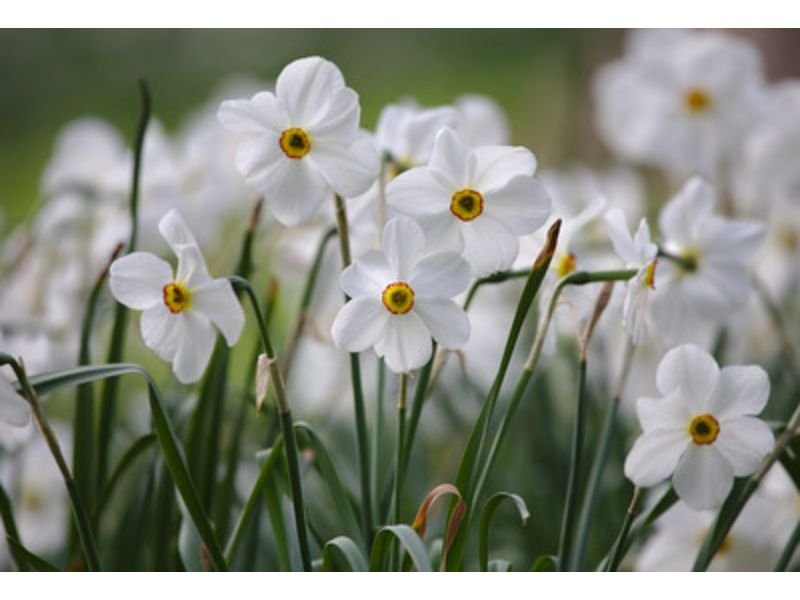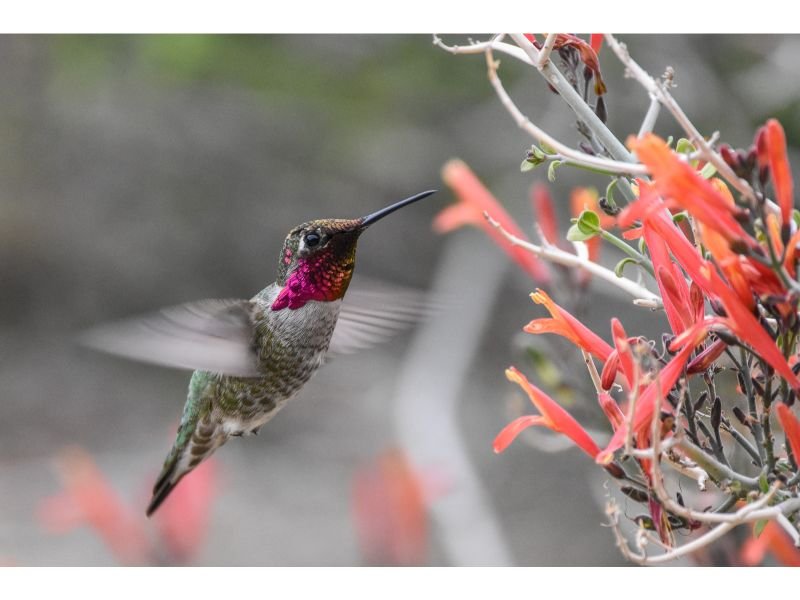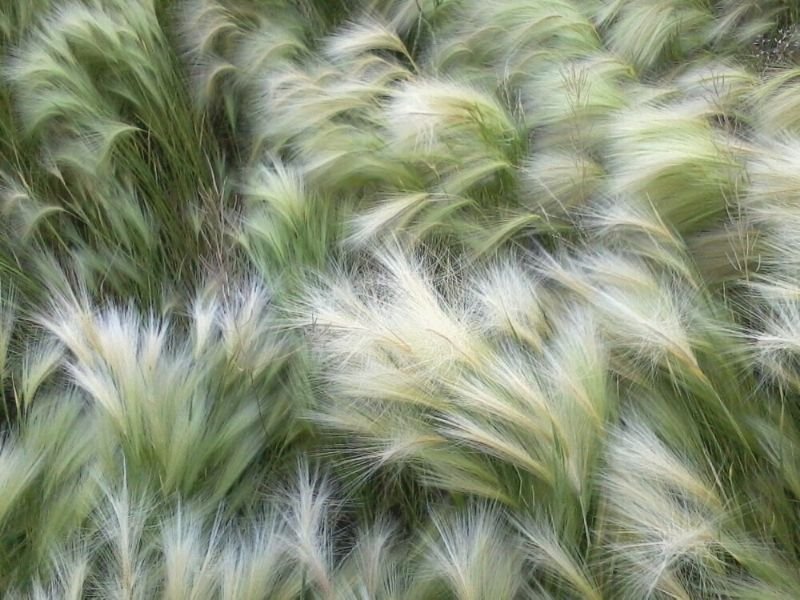Are you looking for colorful and easy-to-maintain annual flowers to brighten up your summer? Then zinnia would be your best bet. They can be grown in almost all parts of the world and possess wonderful colors and shapes–making them one of many plant lovers’ favorites. Do you want to know how to plant zinnia seedlings or simply just want to get to know more about zinnias? If that’s your question, then you have come to the right place. Without further ado, let’s get started!
Table of Contents
The history of zinnia: Origin and symbolism.
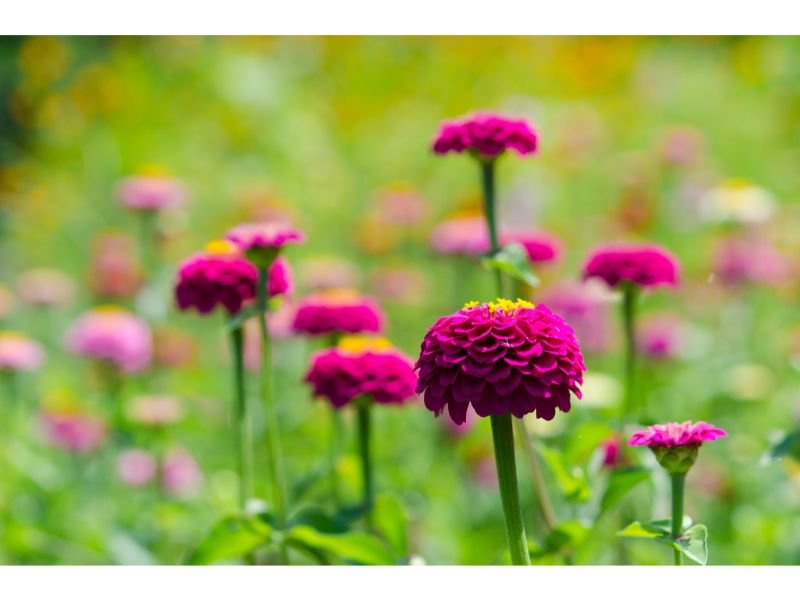
Zinnia (Zinnia Elegans) is a small flowering shrub that is native to Mexico, Central America, and South America. They grow and thrive well in tropical areas and can easily grow only by spreading the seeds on the ground. If you’re wondering why some Zinnias cultivars look like daisies while other cultivars look like dahlias, they all fall under the same Aster or Asteraceae family.
The zinnias that we know today have had a long history. They were first discovered in Mexico and brought by the Spaniards in the 1500s, which means their existence can be traced back to the Medieval Era! Since the middle of the 1600s, zinnias have become a well-known plant throughout Europe–but it wasn’t the zinnias that we know now, but rather the reddish-orange Peruvian Zinnias. It was named after Johann Gottfried Zinn, a German botanist from the 1720s who first wrote a description and information regarding the plant.
In 1796, the common zinnia (Zinnia Elegans), or the ancestor of all modern zinnias, was brought to Europe. At the time, it was mistaken for a Brazilian marigold. Since then, more and more people have fallen in love with its color and petal formations. Two years later, zinnia seeds were brought to the United States. However, unlike Europeans, the Americans weren’t able to find the appeal of zinnias. They were able to capture the American’s heart after some cultivars with the color of salmon, red, purple, and orange petals came back through North America.
A giant cultivar of zinnia, California Giant, which can grow up to 1 meter tall, was made by a botanical company named Bodger Seeds Ltd. in 1920, two years after World War I ended. Later on, the popularity of zinnias kept growing. Now this beautiful flower has 20 known species with hundreds of different cultivars and hybrids. Zinnias are known as the symbol of friendship, love, and affection. In some cultures, they also symbolize friends who have been absent for a long time.
Zinnia basic care requirements and cultivars.
Zinnia loves areas with warmer temperatures. A minimum of 6 to 8 hours of direct sunlight each day along with moist, well-draining, and high organic matter soil. They prefer to be grown in slightly acidic and/or neutral soil, where a pH level of 5.5 to 7.5 is the best. Make sure to provide growing space as minimum as 20 centimeters wide to 60 centimeters wide, depending on its cultivar’s growth habit. To provide more drainage, you can add compost or soil mix material like sand, perlite, or coco peat. To improve moisture level, you can spread mulch all around the topsoil.

Zinnia also loves the basic fertilizer such as Nitrogen, Phosphorus, and Potassium by the time you are planting zinnia seedlings. After that, lower the fertilizer intake to once a month and give your zinnia a higher Phosphorus fertilizer to promote more bloom. Although zinnia needs moist soil, you only need to water them regularly. Check if the topsoil is dry then it’s time to water your lovely plant. Only water the plant’s base area and avoid watering the leaves if possible.
Depending on their size and cultivars, zinnias can be either fast-growing or slow-growing. Their growth habit also ranges depending on those two things. They can be tall with a rounded appearance and slow-growing, or fast-growing with smaller flower sizes. Taller varieties of zinnias are often used as cut flowers. Cut flowers are flowers that have been cut from their host plant. Usually used for decorative purposes.
In general, we can differentiate zinnia cultivars by looking at their petals formation. Here’s the guideline:
- Single-flowered zinnia: each flower has one row of petals, and the center can be seen
- Semi-double-flowered zinnia: each flower has many rows of petals, and the center can be seen
- Fully double-flowered zinnia: each flower has many rows of petals, but the center can’t be seen
How to identify zinnia seedlings?
Now that you know how to take care of zinnias, it’s time to identify zinnia seedlings. For a glance, zinnia seedlings slightly look like sunflower seeds–especially when they are dried. They are both tiny and have an ovate shape. The difference is in their colors. Sunflower seeds are black with white stripes, while zinnia seedlings are deep dark brown, broken white, or black-colored.
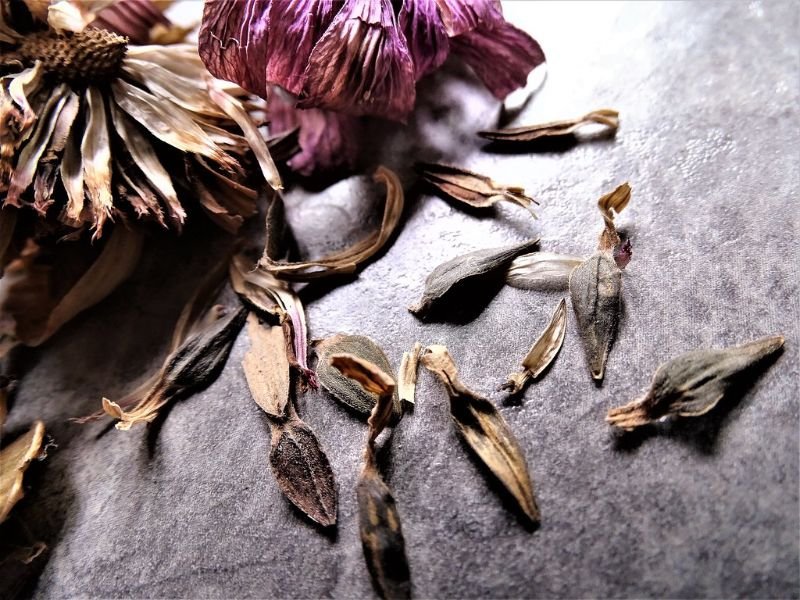
As a popular flowering and ornamental plant with so many cultivars, here are several varieties of zinnia to help you choose which seedlings you should grow based on their colors and petals formation:
- California Giant: producing around 12 to 15 centimeters semi double-flowered blooms with colors ranging from yellow, orange, pink, red, and white.
- Peppermint Stick: producing semi-double-flowered blooms with white petals and splash or stripes of pink. Could also be a combo of crimson and white, deep orange and yellow, or yellow and crimson.
- Jazzy Mix: This variety is much smaller compared to the previous two, producing only 2.5 to 5 centimeters blooms. Another semi-double-flowered bloom with a greenish-yellow center. The outer part of the petals can be white, yellow, or maroon, while the inner part of the petals can be maroon, pink, or purple.
How to get the seedlings to do a zinnia seed germination?
The first thing you have to do is to pick a zinnia head flower and dry it under direct sun. The process may take days to one week, depending on moisture level, weather, and the flower itself. Make sure you dry the flower in a place far away from water. After the flower completely dries, shake the flower head gently until all the seedlings come out, and don’t forget to dry the seedlings.
Tips: Separate your zinnia seedling based on their varieties in separate jars or containers. You wouldn’t want to grow two varieties at the same time.
Step by step planting zinnia sprouts.
Planting zinnia from seedlings to its mature stage is not a difficult task. You can grow zinnia directly into its final soil. Here are the things you’ll need:
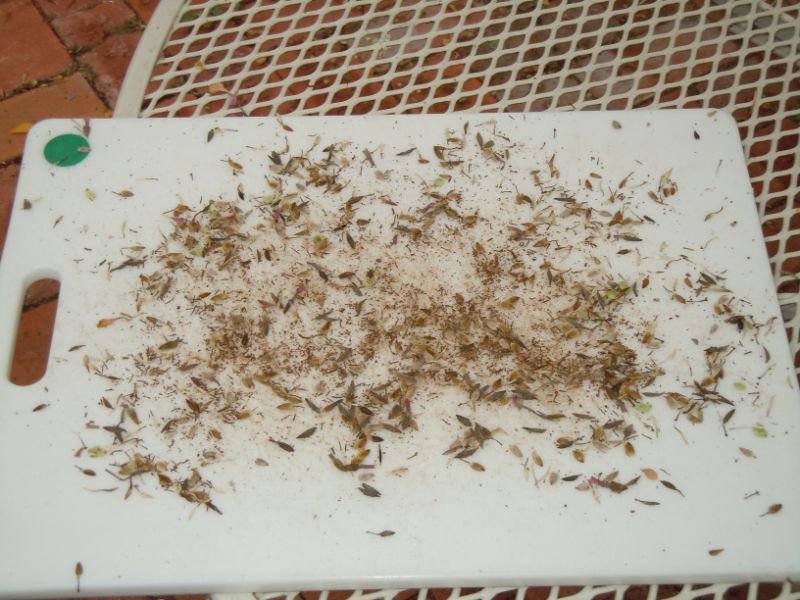
- Dried zinnia seedlings
- High organic matter soil
- Water
- Fertilizer
- Compost
- Trowel
- Hand gloves (optional)
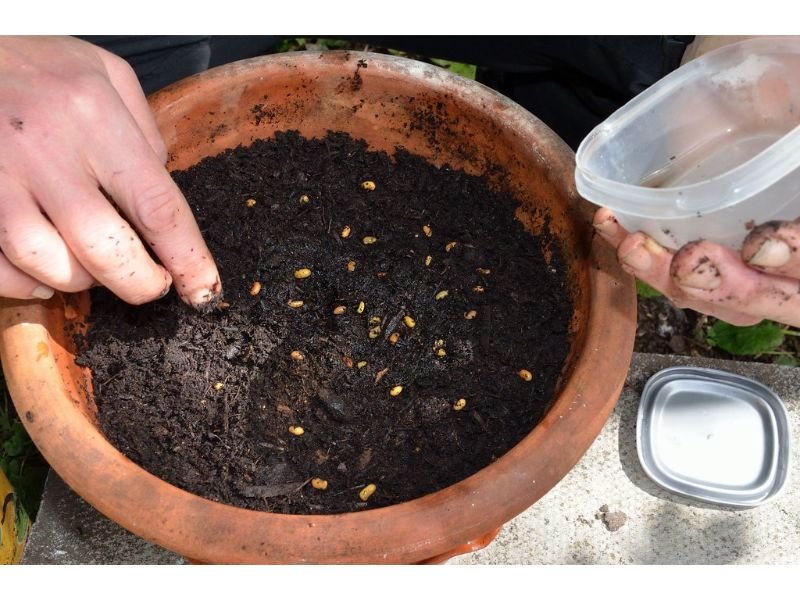
The first thing you have to do is determine if the soil consists of high organic matter. Once you find the best soil for your zinnia seedlings, dig the soil for as deep as 0.6 centimeters or ¼ inch and then put the zinnia seedlings there. Provide spacing depending on which variety you are planting to prevent your zinnia from being overcrowded–which can result in the plant ‘fighting’ each other to get the most nutrients.
Tips 1: Make sure the temperature is around 21 to 26 Celcius before you plant zinnia seedlings. Anything too hot or too cold won’t make the seedlings germinate.
Tips 2: You can add fertilizer to enrich the soil and boost the growth process.
Second, after your zinnia seed starts to grow its first leaves, which may take anywhere from as fast as 4 days to a week, maintain its ideal growing place by providing the right amount of water and fertilizer–as well as controlling the soil’s moisture level, drainage, and temperature. You should also keep an eye out for pests, fungi, and diseases,
Things to note: Zinnia's planting process requires you to deadhead any fading flowers. Do this process to increase new growth and prolong the blooming season. Pruning is also beneficial for zinnia’s growth. You should start pruning your zinnia when they reach a height as minimum as 25 centimeters.
What is the deadheading process in plants?
Deadheading is a simple process of cutting any fading or dead flowers from plants.
How often should I deadhead zinnias?
You should do the deadheading process once you see any whitening, browning, and fading colors in your zinnia’s blooms. Those usually are the characteristic of fading or dead flowers and should be deadheaded. Cut these unwanted flowers from the stem and determine how far you wanted to cut them.
Zinnia common pests and diseases.
Just like any other plant, zinnias are prone to pests and diseases. Common pests including aphids, spider mites, slugs, and beetles, as well as diseases like powdery mildew and leaf spots are harmful to your zinnia. In more severe cases these pests and diseases may even cause plant death. The symptoms include but are not limited to:
- Browning, withering, and yellowing. This can occur not only in flowers but also in the leaves.
- Root rotting
- Deformed growth or no new growth.
- There are holes or bite marks at the center or the edge of the leaves. Usually caused by pests like caterpillars.
- There are tiny, deep purple or black round spots with white or gray centers all around the leaves.
- There are white spots all over the foliage. These white spots make it as if your zinnia has been splashed with baby powder.
To solve this problem, the first thing you want to do is to isolate your zinnia from any other plant. Wipe off any visible pests or fungi using running water or wet wipes. Most fungal infections are highly contagious, so you have to do this step carefully. Next, you can use a fungicide or insecticide. Both chemical and natural or homemade work great to treat your zinnia’s illnesses. Here are several active ingredients you can try to treat pests and fungi:
- Myclobutanil
- Sulfur
- Neem oil
- Insecticidal soap
- Chlorothalonil
- Horticultural oil
- Thiophanate Methyl
Frequently asked questions about zinnia seedlings.
1. What can you do with unused zinnia seedlings?
You can use zinnia seedlings as a gift for your loved ones, especially when they love gardening! To illustrate, put the dried seedlings inside a sealed mason jar then decorate using ribbons, and colorful wrapping papers, and then attach your letter or birthday card. This can be a great yet simple gift idea.
2. How long can you store the zinnia seedling?
We recommend keeping the seedlings for a maximum of 4 to 5 years. Make sure you store and dry the seedlings properly.
3. What is the best place to store zinnia seedlings?
Any place that is cool, dry, and away from direct sunlight.
4. What is the best way to keep zinnia seedlings so I can reuse them later?
After you finish the drying process, you can store the seedlings inside tiny containers, glass jars, or paper bags. For jars and containers, make sure you close the lid firmly. For paper bags, you can use masking tape to give extra protection, so the seedlings won’t be scattered.
5. Can I grow zinnia sprouts indoors?
Yes! Zinnia can be grown as an indoor plant too. They make perfect ornamental for containers, pots, and window boxes.
6. Can I germinate zinnia sprouts during winter?
You should wait until the end of the winter season since zinnias are not cold-tolerant.
7. Can I grow zinnia seedlings along with other plants?
Yes, zinnia can be a good companion plant. You can grow zinnia along with tomatoes, marigolds, dahlias, potatoes, cucumbers, and many more. To ensure this, you have to find a companion plant that requires the same basic needs as zinnias to grow so they won’t compete to get food.
8. Do zinnias need staking?
Once again, depending on which variety, it’s good to provide stakes for your zinnia although it is not necessary. Some varieties may not need stakes at all.
Wrap up.
To conclude, growing zinnia sprouts is easy. They are low-maintenance and you can surely propagate the plant using seedlings that you collect yourself. What’s better, you don’t have to spare some extra bucks to get new seeds to grow for the next season. If you want to know more about the world of gardening, don’t forget to explore our website to get free and the best information available. Happy Gardening!

New author in the hood. Loves gardening and flowers are my spirit animals (yes I know they are not animals but I insist). I will be covering most of the flowers’ topics here and occasionally random though as well.

